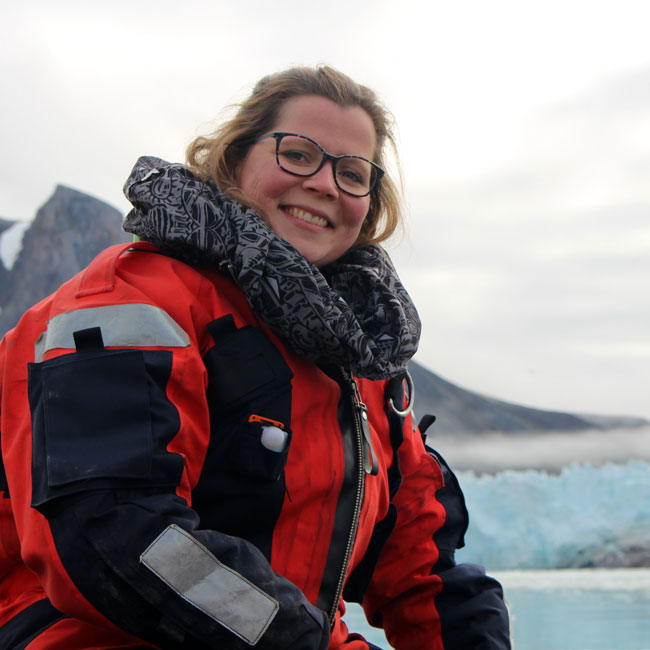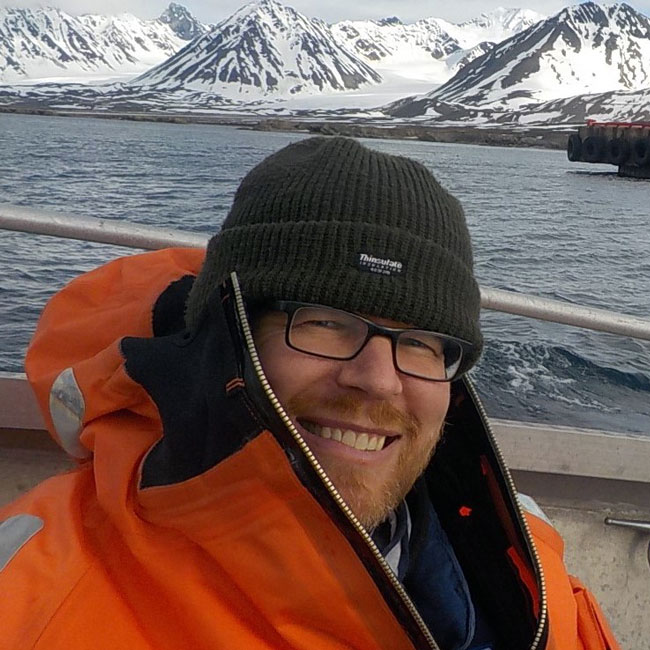High Ecophysiological Plasticity of Desmarestia aculeata (Phaeophyceae) Present in an Arctic Fjord under Varying Salinity and Irradiance Conditions
[Published 13 October 2022]
Scientific Publications
Abstract
The seaweed Desmarestia aculeata (Phaeophyceae) is distributed in the temperate zone of the North Atlantic up to the Arctic, where it is exposed to a high Arctic light regime and fluctuating salinity conditions resulting from glacial and terrestrial run-off. Information on how this species is able to thrive under current and future Arctic conditions is scarce. During the Arctic summer of 2019, D. aculeata was collected in Kongsfjorden, Svalbard (78.9° N, 11.9° E) to investigate its physiological and biochemical responses to variations in salinity (salinities: 34, 28 and 18) and daily cycles of irradiance (50–500 μmol photons m-2 s-1 ) at 0 °C over 21 days. The species revealed effective short-term acclimation to both abiotic drivers. Maximal quantum yield of PSII (Fv /Fm ) fluctuated with the light cycle at a salinity of 34, while the maximum relative electron transport rate (rETRmax) significantly differed between salinities of 28 and 18. Chlorophyll a and β-Carotene remained at high concentrations in all treatments showing pronounced acclimation during the experiment. High mannitol concentrations were measured throughout the experiment, while phlorotannins were high at low salinity. Hyposalinity and light are interacting drivers of the physiological and biochemical acclimation process for D. aculeata. Our experiment highlights the high ecophysiological plasticity of D. aculeata, suggesting that the species will likely be capable of withstanding future habitat changes in the Arctic.
FACE-IT Scientists:
Nora DIEHL
Marine Botany, University of Bremen, Germany
ResearchGate
Nora’s FACE-IT Projects
Role in FACE-IT:
• Researcher "Biodiversity Changes"
• Researcher "Ecosystem Function Changes"
Kai BISCHOF
Marine Botany, University of Bremen, Germany
Center for Marine Environmental Sciences MARUM, University of Bremen, Germany
UBremen personal page
Kai’s FACE-IT Projects
Role in FACE-IT:
• Scientific Coordinator
• Member of the Executive Board
• Co-Leader "Policy Dialogue and Outreach"
• Co-Leader "Project Management"
• Leader "Ethical Requirements"
• Researcher "Biodiversity Changes"
• Researcher "Ecosystem Function Changes"


